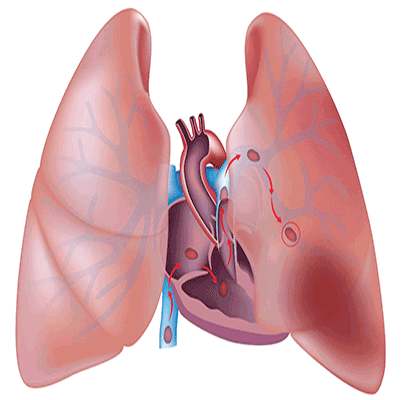mitral regurgitation
Mitral Valve Regurgitation
Overview
The mitral valve is a heart valve located between the left atrium and left ventricle.
Mitral regurgitation (also called mitral insufficiency or mitral incompetence) occurs when the valve does not close properly.
As a result, some blood leaks back (regurgitates) into the left atrium instead of flowing forward into the body. The more the valve stays open, the more blood leaks backward, and the more severe the condition becomes.
Because of this backward flow, the heart must work harder to pump blood, which may lead to fatigue, shortness of breath, fluid buildup, or high blood pressure.
Symptoms
-
Mild cases may not cause symptoms.
-
Severe cases can include:
-
Shortness of breath, especially with exertion or when lying down
-
Fatigue and weakness
-
Heart palpitations or irregular heartbeat
-
Swelling of ankles, feet, or legs (edema)
-
Coughing, especially at night or when lying flat
-
Dizziness or fainting (in advanced cases)
-
Effects / Complications
If untreated, severe mitral regurgitation can lead to:
-
Heart enlargement (left atrium and ventricle dilation)
-
Pulmonary hypertension (high blood pressure in the lungs)
-
Congestive heart failure
-
Atrial fibrillation (irregular heartbeat)
-
Increased risk of stroke or blood clots
-
Reduced quality of life and, in advanced stages, life-threatening complications
Treatment & Management
Medical Treatment
-
Monitoring (watchful waiting): Mild cases may only require regular echocardiograms.
-
Medications:
-
Diuretics (to reduce fluid buildup)
-
Beta-blockers or ACE inhibitors (to control blood pressure and reduce heart strain)
-
Blood thinners (if atrial fibrillation develops)
-
-
Surgery / Procedures:
-
Mitral valve repair (preferred when possible)
-
Mitral valve replacement (if repair isn’t feasible)
-
Catheter-based procedures (minimally invasive options for select patients)
-
Lifestyle & Self-Care
-
Limit salt intake to reduce fluid retention
-
Avoid smoking and excess alcohol
-
Stay physically active (as tolerated and advised by a doctor)
-
Manage blood pressure and other heart conditions
-
Maintain a healthy weight
Homeopathic Support (consult a qualified practitioner)
-
Crataegus Oxyacantha – for strengthening heart muscles
-
Digitalis Purpurea – for irregular pulse and weak heart action
-
Cactus Grandiflorus – for chest constriction and palpitations
-
Arnica Montana – for fatigue and weakness in heart conditions
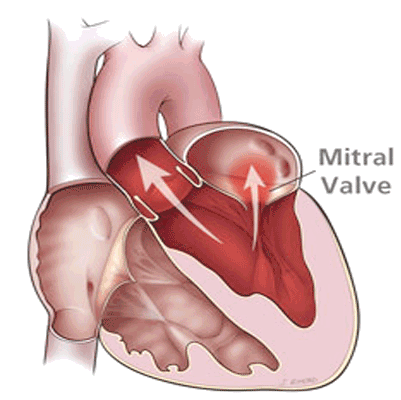
Mitral Valve Prolapse
Mitral Valve Prolapse (MVP)
Overview
The mitral valve is located between the left atrium and left ventricle of the heart. It normally opens and closes tightly to ensure blood flows in one direction—from the left atrium to the left ventricle.
In mitral valve prolapse, part of the mitral valve’s leaflets bulges (prolapses) backward into the left atrium during the contraction of the left ventricle. This may sometimes allow blood to leak backward (mitral regurgitation).
MVP is different from mitral stenosis, where the valve becomes stiff and narrowed, restricting blood flow.
Symptoms of Mitral Valve Prolapse
Not everyone with MVP shows symptoms. Some may have mild or no issues, while others experience:
-
Shortness of breath, especially with exertion or exercise
-
Swelling in the legs and feet
-
Fluttering or rapid heartbeat (palpitations)
-
Dizziness or lightheadedness
-
Fainting (syncope)
-
Chest pain not related to heart attack
-
Panic attacks or anxiety feelings
-
Numbness or tingling in the hands and feet
-
Fatigue or reduced ability to exercise
Effects / Complications
If untreated or severe, MVP can lead to:
-
Mitral regurgitation (backflow of blood into the left atrium)
-
Arrhythmias (irregular heartbeats, which may cause palpitations or fainting)
-
Infective endocarditis (rare infection of the heart valve)
-
Stroke (in cases with severe regurgitation and clot formation)
-
Heart failure (if regurgitation becomes severe and damages the heart over time)
Treatment & Management
Medical Treatment
-
No treatment may be needed if MVP is mild and without regurgitation.
-
Medications (for symptom control):
-
Beta-blockers (to reduce palpitations, chest pain, or arrhythmias)
-
Anti-arrhythmic drugs (for irregular heartbeat)
-
Diuretics (to reduce swelling and fluid buildup in lungs/legs)
-
Blood thinners (if atrial fibrillation is present)
-
-
Surgical Options (in severe regurgitation cases):
-
Mitral valve repair (preferred)
-
Mitral valve replacement
-
Lifestyle & Self-Care
-
Regular exercise (as tolerated and advised by a doctor)
-
Reduce caffeine and alcohol to avoid palpitations
-
Stress management to control anxiety and panic symptoms
-
Regular echocardiograms to monitor valve function
-
Avoid smoking
Homeopathic Support (under guidance of a qualified homeopath)
-
Crataegus Oxyacantha – strengthens heart muscles, relieves palpitations
-
Digitalis Purpurea – for weak, irregular pulse
-
Cactus Grandiflorus – for chest tightness and heart constriction
-
Arnica Montana – for fatigue and heart strain
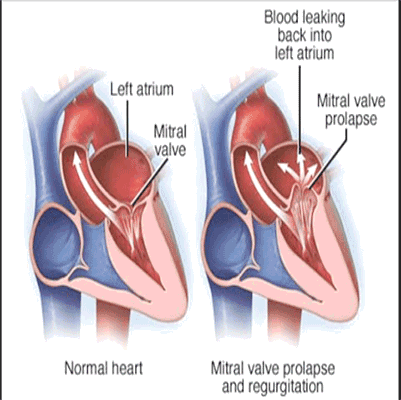
Myocardial infarction
Myocardial Infarction (Heart Attack)
Overview
Myocardial infarction, commonly called a heart attack, occurs when blood flow to the heart muscle is blocked, usually due to a clot or narrowing in the coronary arteries.
Like all muscles in the body, the heart muscle needs a constant supply of oxygen and nutrients to function properly.
When blood flow is reduced or completely blocked (myocardial ischemia), the heart muscle becomes starved of oxygen. If this persists, part of the heart muscle gets damaged or dies, leading to a heart attack.
This condition can also cause serious complications like arrhythmias (abnormal heart rhythms) or sudden cardiac arrest.
Symptoms
-
Pain in the chest, neck, jaw, shoulder, or arm
-
Rapid or irregular heartbeat
-
Shortness of breath, especially during activity
-
Nausea and vomiting
-
Sweating (cold sweat)
-
Unusual fatigue or weakness
Effects (Complications)
If untreated, myocardial infarction can cause:
-
Permanent damage to heart muscle
-
Heart failure (weakened pumping ability)
-
Arrhythmias (irregular heartbeats that may be life-threatening)
-
Cardiac arrest (sudden stopping of the heart)
-
Stroke due to clot formation and circulation issues
-
Death, if emergency care is not provided quickly
Treatment
Emergency Medical Treatment
-
Immediate hospitalization is crucial
-
Medications:
-
Aspirin (to prevent further clotting)
-
Thrombolytics (clot-busting drugs)
-
Blood thinners (anticoagulants)
-
Beta-blockers and ACE inhibitors (to reduce heart strain)
-
-
Procedures:
-
Angioplasty and stenting – to open blocked arteries
-
Coronary artery bypass surgery (CABG) – to restore blood flow
-
Lifestyle & Long-Term Management
-
Quit smoking and alcohol
-
Adopt a heart-healthy diet (low in fat, salt, sugar; rich in fruits, vegetables, whole grains)
-
Regular physical activity (after doctor’s approval)
-
Stress management and adequate rest
-
Regular monitoring of blood pressure, cholesterol, and sugar levels
Homeopathic Supportive Medicines (to complement, not replace emergency care)
-
Cactus Grandiflorus – for constrictive chest pain as if the heart is being gripped
-
Digitalis – for weak, irregular heartbeats with faintness
-
Arnica Montana – for chest pain after exertion or injury to heart muscle
-
Crataegus Oxyacantha – known as a heart tonic, improves cardiac function
Note: Homeopathy may help in recovery and long-term heart health but should never replace emergency or conventional treatment in cases of heart attack.
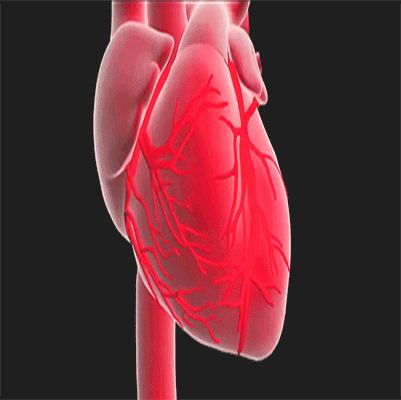
pacemaker
Pacemaker
Overview
A pacemaker is a small electronic device placed under the skin of the chest to help regulate the heartbeat. It consists of two main parts:
-
Generator: a battery-powered unit that sends electrical impulses.
-
Leads (electrodes): thin wires that deliver impulses to the heart muscle.
Pacemakers are commonly used to treat arrhythmias — conditions where the heart beats too fast, too slow, or irregularly. They help ensure the heart maintains a proper rhythm and pumps blood efficiently throughout the body.
Arrhythmias can result from:
-
Aging of the heart, which may slow the natural pacemaker (the sinus node).
-
Heart muscle damage after a heart attack or heart surgery.
-
Heart conditions such as heart block or heart failure.
Types of Pacemakers
-
Single-chamber pacemaker – one lead connected to either the right atrium (upper chamber) or right ventricle (lower chamber).
-
Dual-chamber pacemaker – two leads connected to both the right atrium and right ventricle, coordinating timing between chambers.
-
Biventricular pacemaker (cardiac resynchronization therapy – CRT) – three leads connected to the right atrium, right ventricle, and left ventricle to improve pumping in people with severe heart failure.
Effects of a Pacemaker
-
Restores and maintains a regular heartbeat.
-
Reduces dizziness, fainting, fatigue, and palpitations caused by slow or irregular heart rhythms.
-
Improves exercise tolerance, blood circulation, and overall quality of life.
-
In patients with heart failure, can enhance pumping efficiency and reduce symptoms like breathlessness or swelling.
-
Requires some lifestyle adjustments (e.g., avoiding strong electromagnetic interference).
Treatment Considerations
A pacemaker is usually recommended when:
-
The heart beats too slowly (bradycardia).
-
There are pauses in heartbeat or heart block.
-
Heart failure needs resynchronization therapy.
After pacemaker implantation:
-
Patients may need a short hospital stay for monitoring.
-
Regular check-ups are required to test battery life and function (pacemaker batteries last 5–15 years).
-
Certain precautions should be taken:
-
Avoid placing cell phones directly over the pacemaker site.
-
Stay away from strong magnets or devices with high electromagnetic fields.
-
Inform doctors before any surgery or MRI (only MRI-safe pacemakers can be scanned).
-
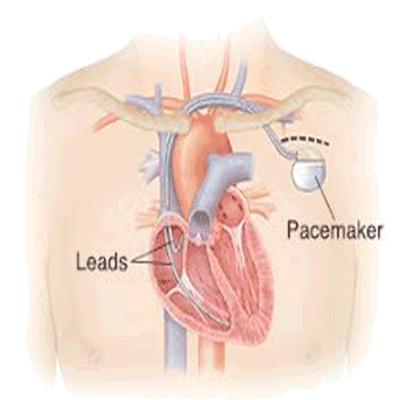
Pulmonary
Overview
Pulmonary valve stricture could be a condition within which a deformity on or close to your pulmonary valve narrows the pulmonary valve gap and slows the blood flow.
The semilunar valve is found between the lower right heart chamber (right ventricle) and therefore the pneumonic arteries.
Adults often have semilunar valve stricture as a complication of another malady, but mostly, pulmonary valve stricture develops before birth as a noninheritable heart defect.
Pulmonary valve stricture ranges from gentle and while not symptoms to severe. Mild pulmonary stenosis does not sometimes worsen over time, however moderate and severe cases might worsen and need surgery.
Fortunately, treatment is usually extremely successful , and the majority with pulmonary valve stricture will expect to steer traditional lives.
Symptoms
- Pulmonary valve stenosis signs and symptoms may include:
- Heart murmur — an abnormal whooshing sound heard employing a medical instrument, caused by turbulent blood flow
- Fatigue
- Shortness of breath, especially during exertion
- Chest pain
- Loss of consciousness (fainting)
